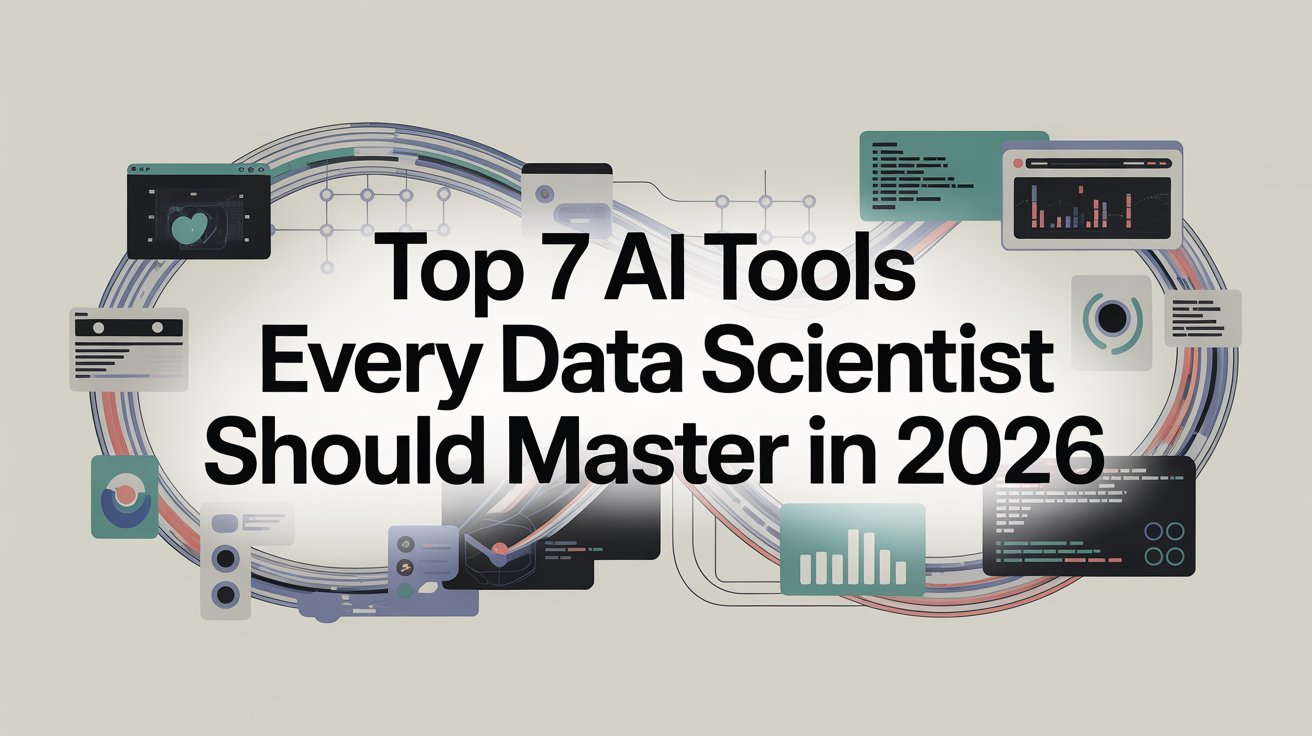Top 7 AI Tools Every Data Scientist Should Master in 2026

Artificial Intelligence (AI) is reshaping data science at lightning speed, and 2026 promises even more innovation. From automating repetitive tasks to generating actionable insights, AI tools are now essential for every data scientist.
Whether you’re a beginner or a professional looking to stay ahead, mastering the right AI tools in 2026 will give you a competitive edge and help you work smarter and faster.
In this blog, we’ll cover 7 AI tools that every data scientist should know in 2026—with practical uses, benefits, and official links at the end.
1. Google AutoML
Google AutoML allows you to build high-quality machine learning models without deep coding. Its drag-and-drop interface automates tasks like model selection, hyperparameter tuning, and deployment.
Key benefit in 2026: Quickly experiment with AI models, saving time and effort.
2. H2O.ai
H2O.ai is an open-source AI platform for both beginners and advanced users. It provides AutoML, predictive modeling, and data visualization tools.
Why it matters: Seamless integration with cloud platforms and enterprise-level features.
3. TensorFlow
TensorFlow is a leading framework for deep learning and neural networks. It allows you to build models for image recognition, NLP, and predictive analytics.
Career benefit: Widely used in industry, making it a must-learn for AI-driven data science.
4. PyTorch
PyTorch is an open-source deep learning framework known for flexibility and dynamic computation graphs.
Use case: Rapid prototyping and building complex AI models with GPU acceleration.
5. Power BI with AI Integration
Power BI now includes AI-powered insights, predictive analytics, and natural language queries.
Why it matters: Turn raw data into actionable insights quickly, helping teams make faster decisions.
6. RapidMiner
RapidMiner is a low-code platform for AI and machine learning. It allows you to preprocess data, train models, and visualize results without heavy coding.
Key advantage in 2026: Ideal for beginners to learn AI workflows efficiently.
7. ChatGPT & Other LLMs
Large Language Models (LLMs) like ChatGPT are useful for data cleaning, feature engineering, and exploratory data analysis.
Why it matters: Automates repetitive tasks so data scientists can focus on insights, boosting productivity.
Conclusion
Mastering these 7 AI tools in 2026 will give you a competitive edge in data science. From AutoML and H2O.ai to AI-driven dashboards in Power BI and leveraging LLMs like ChatGPT, these tools are transforming how data science is done.
Whether you’re starting your career or leveling up your skills, learning these tools is essential for staying relevant in the AI-driven data science era.
Learn Data Science with Heuristic Academy
If you’re ready to build a career in AI-driven data science, the Heuristic Academy Data Science Course is designed for beginners and professionals. The program covers Python, machine learning, AI tools, Power BI, and real-world projects so you can apply concepts directly in your career.
👉 Enroll in the Heuristic Data Science Course here
Tools Link
| Tool Name | Official Link |
|---|---|
| Google AutoML | Visit AutoML |
| H2O.ai | Visit H2O.ai |
| TensorFlow | Visit TensorFlow |
| PyTorch | Visit PyTorch |
| Power BI | Visit Power BI |
| RapidMiner | Visit RapidMiner |
| ChatGPT & LLMs | Visit ChatGPT |
READ MORE Blog On Data Science
1. DATA SCIENCE UNCOVERED
2. AI TRANSFORMING DATA SCIENCE
FAQ
Q1. How do I choose the right AI tool as a beginner?
Start with low-code platforms like Google AutoML or RapidMiner, then move to frameworks like TensorFlow or PyTorch for advanced modeling.
Q2. Can these AI tools replace data scientists?
No. AI tools automate repetitive tasks but cannot replace human expertise in critical thinking, strategy, and domain knowledge.
Q3. Are these tools suitable for beginners?
Yes. Tools like AutoML, RapidMiner, and Power BI are beginner-friendly and provide a smooth learning curve.
Q4. Which AI tool is best for deep learning projects?
TensorFlow and PyTorch are industry-standard frameworks for deep learning involving images, NLP, or predictive modeling.
Q5. How can these AI tools improve my career prospects?
Mastering these tools makes you more productive, industry-ready, and competitive in AI-driven data science roles.